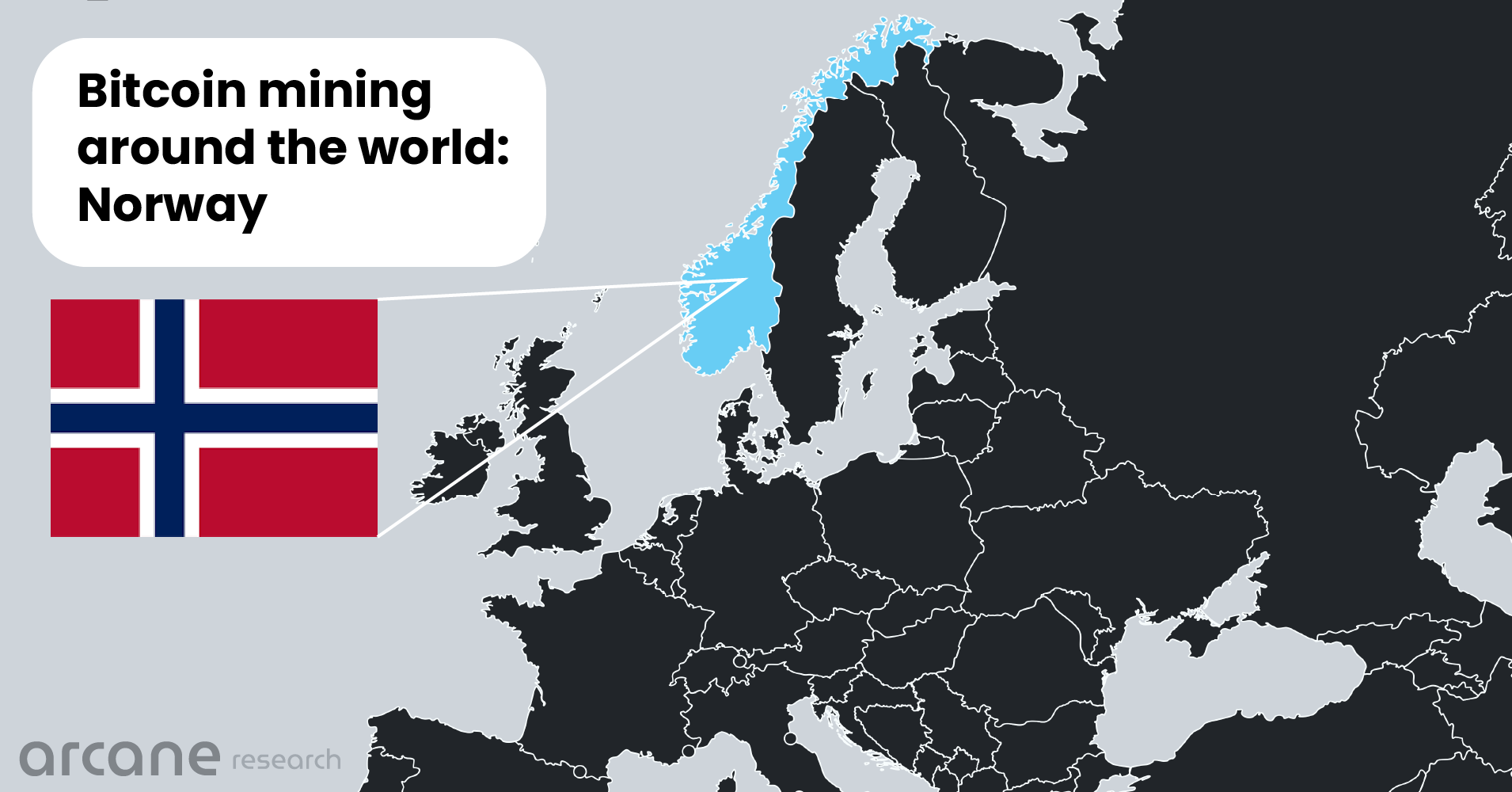A large mining industry given the country’s small size
We should first find out how big Norway’s bitcoin mining industry is. I will provide a couple of existing estimates before coming up with my own numbers.Cambridge’s Bitcoin Mining Map, which estimates the hashrate share of each country, gives Norway 0.58% of Bitcoin’s hashrate. Multiplying this share with their 15.6 GW estimate for the Bitcoin mining network's total power demand gives Norwegian miners a power draw of 90 MW, assuming their hardware has the same power efficiency as the network average.CoinShares also estimated the size of Norway's bitcoin mining industry and found it to consume 66 MW of power. While Cambridge's top-down methodology used data from four mining pools to estimate the geographic distribution of miners, CoinShares applied a bottom-up procedure to identify all the mining facilities in each country. Similar to CoinShares, I did my best to map out all the mining facilities in Norway and identified 120 MW of current bitcoin mining operations in Norway, which you can find on the map below. This power draw, multiplied by Сambridge’s estimate for the Bitcoin mining network’s total power demand means Norwegian bitcoin miners produce 0.77% of Bitcoin’s hashrate.Who mines bitcoin in Norway?
Generating almost 1% of Bitcoin’s hashrate, Norwegian miners are not the biggest but still important contributors in securing the network. Who are they?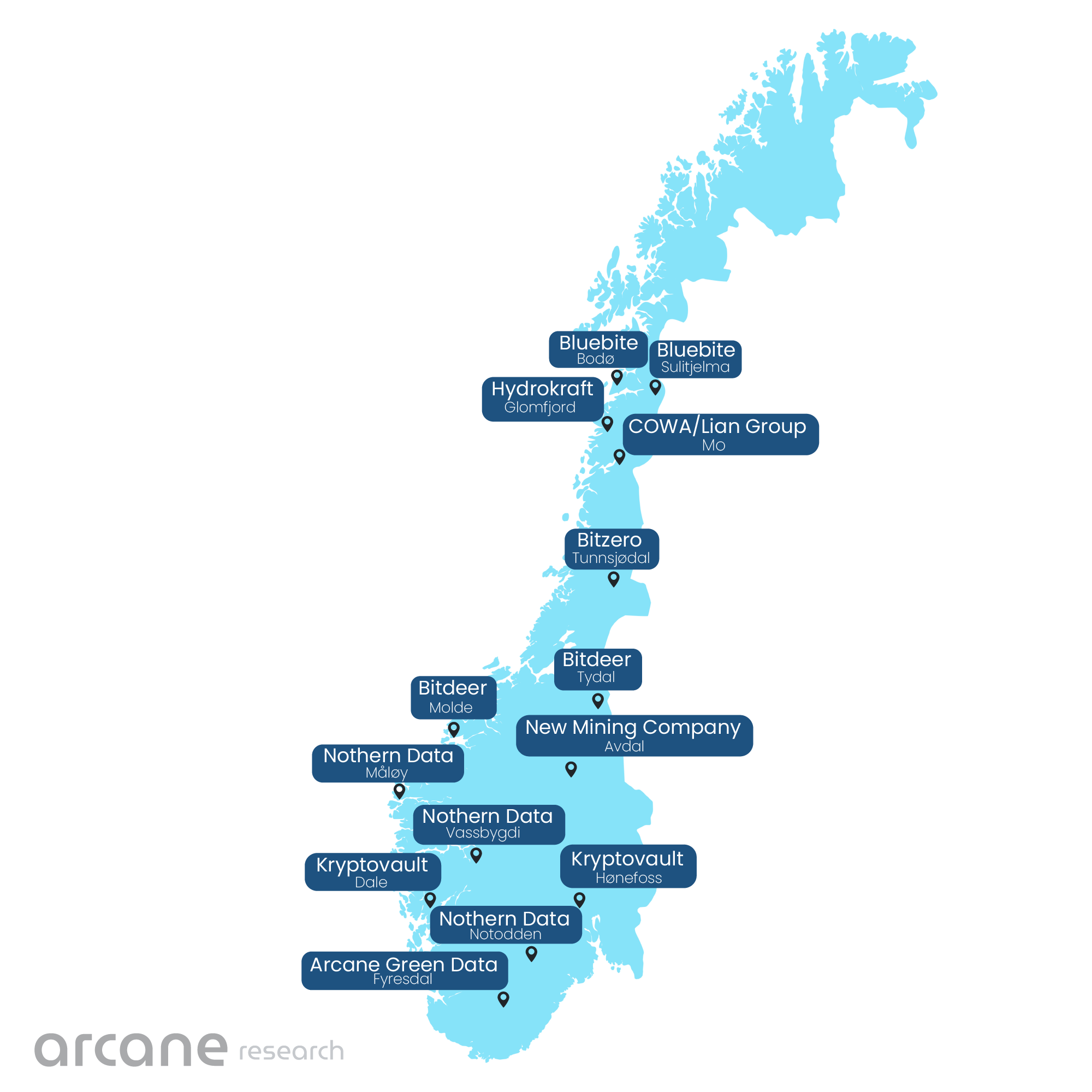
Preview
A green oasis of renewable energy
Now we will start exploring what attracted all these miners to Norway.Mining is an energy-intensive industry under heavy public pressure regarding its carbon footprint. Therefore, a top priority for miners is powering their operations with renewable energy.With its mountainous terrain and wet climate, Norway is made for hydropower. The buildout of the hydroelectric power stations started at the end of the 19th century. Since then, hydro has been Norway’s primary source of electricity, giving the country an abundance of cheap, reliable, and green power.
Preview

Preview
The further north, the cheaper electricity
With all the zero-marginal cost of hydroelectric power, Norway has enjoyed some of Europe’s cheapest electricity. Although the country is divided into five electricity price zones, prices have historically been similar in all zones. That changed in 2021.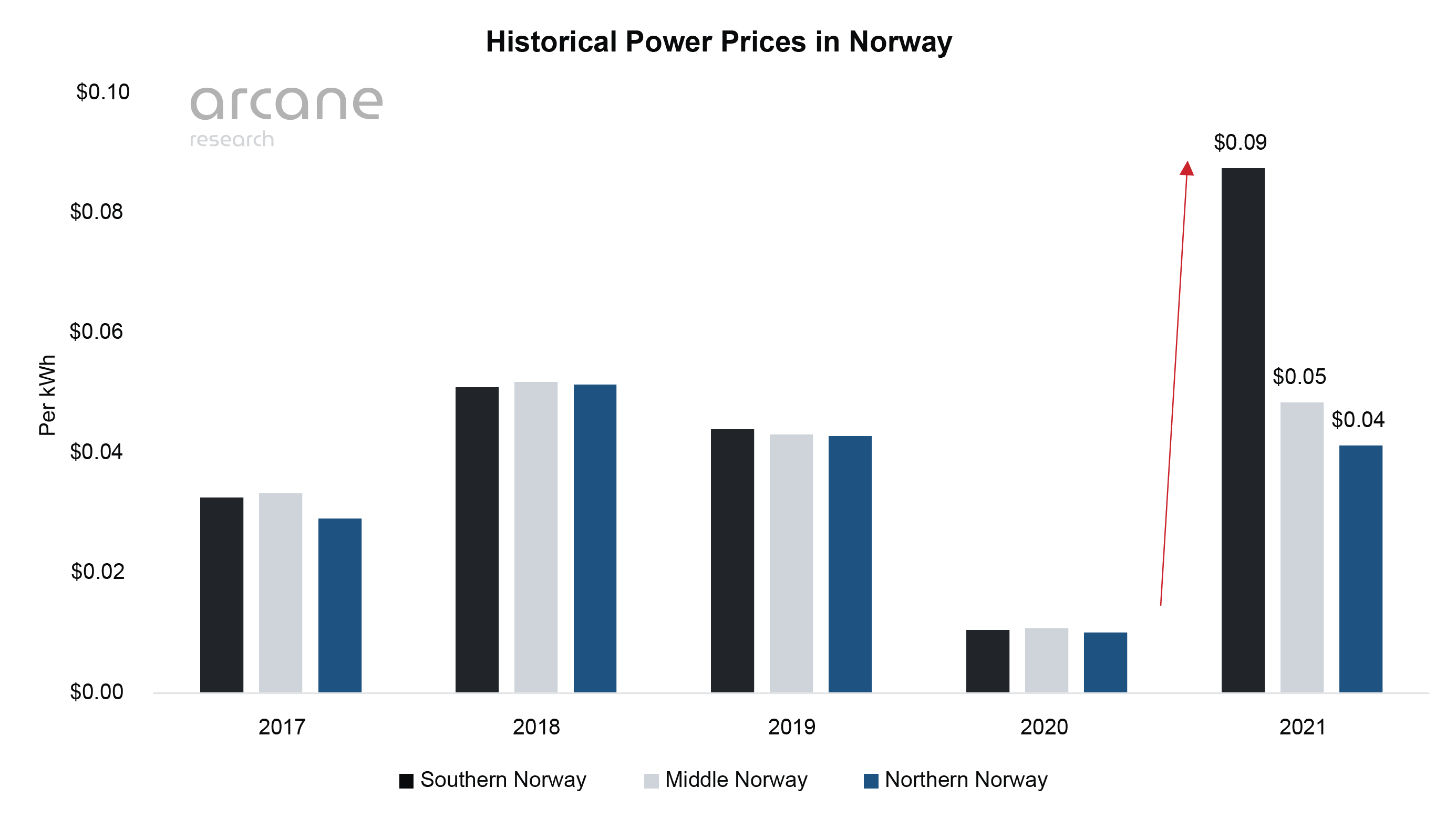
Preview
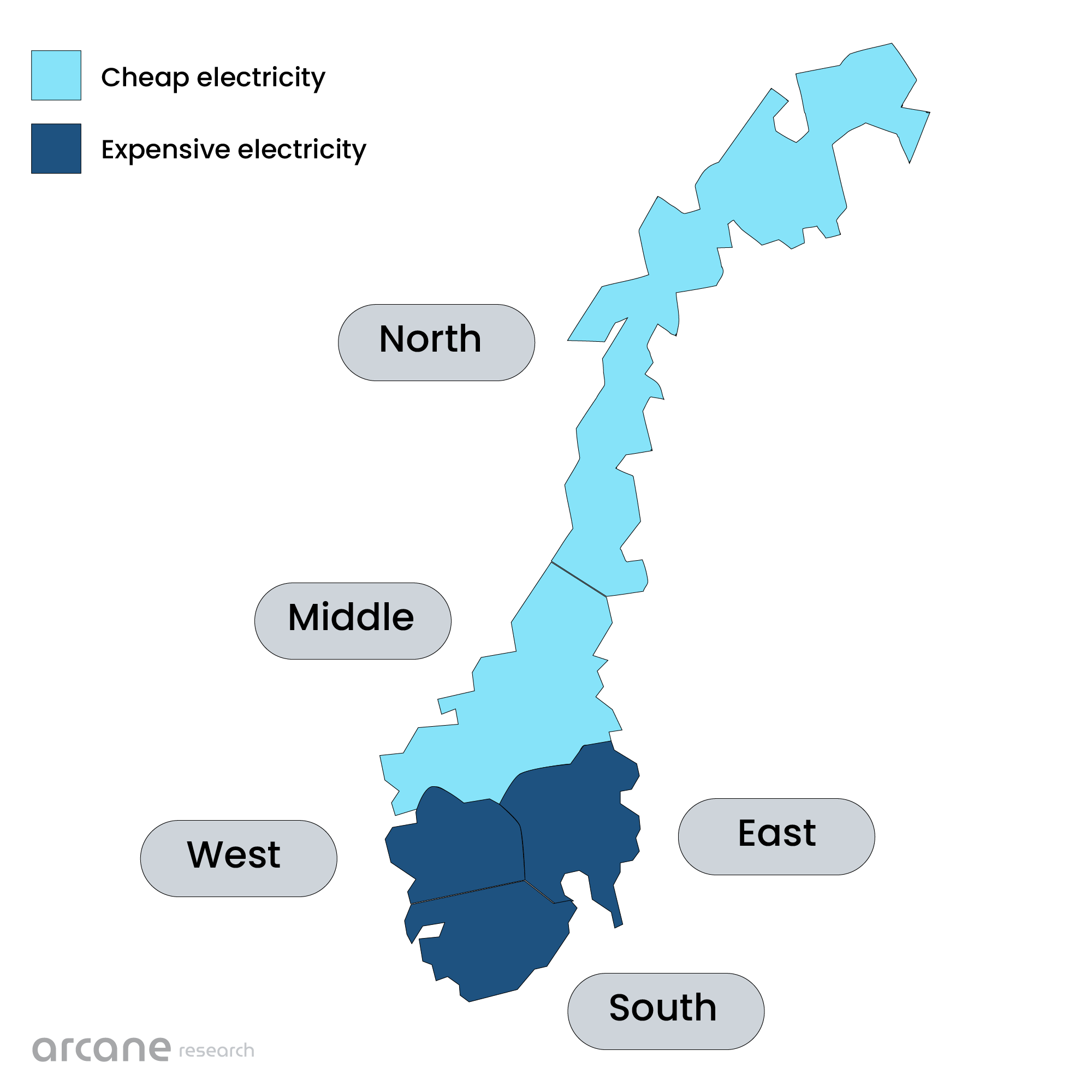
Preview
Power will stay expensive in the south and cheap in the north
With Norway connected to the volatile European market, it’s uncertain how electricity prices will develop in the future. National grid operator Statnett expects the power prices to gradually decrease due to European gas and coal prices “normalizing”.
Preview
Norwegian miners want to contribute to the energy sector
Norwegian miners are exploring how to increase their participation in the energy sector, either by providing balancing services in the power market or by reusing the excess heat from their operations.The need for energy-intensive industries like bitcoin miners to help balance the electricity system is increasing as wind and solar's share of the generation capacity grows. The electricity supply and demand must always be in balance, and historically we have been able to provide this balance by simply adjusting the supply side's production. Because wind and solar are weather dependent, we can't easily adjust their production to follow the demand.Norway's grid operator Statnett understands that the need for grid balancing will increase and therefore opened a balancing market this year where demand-side resources like bitcoin miners can participate. Bitcoin mining is highly suitable for grid balancing since the process is both energy-intensive and can be interrupted at almost no cost. You can learn more about it in this article, explaining how miners are helping stabilize Texas’ electricity system.In addition, many Norwegian bitcoin miners are experimenting with reusing the excess heat from their operations. These waste-minimization initiatives can benefit Norway, both from an economic and ecological perspective since heating makes up a significant share of the cold country's energy consumption. At the same time, heat is bitcoin miners’ main waste component.Kryptovault has been reusing the heat from their Hønefoss operation to dry lumber for more than two years. The company collects the heat from its mining operation in pipes and donates it to a local lumber company that employs six people at the site, reducing waste and creating local jobs.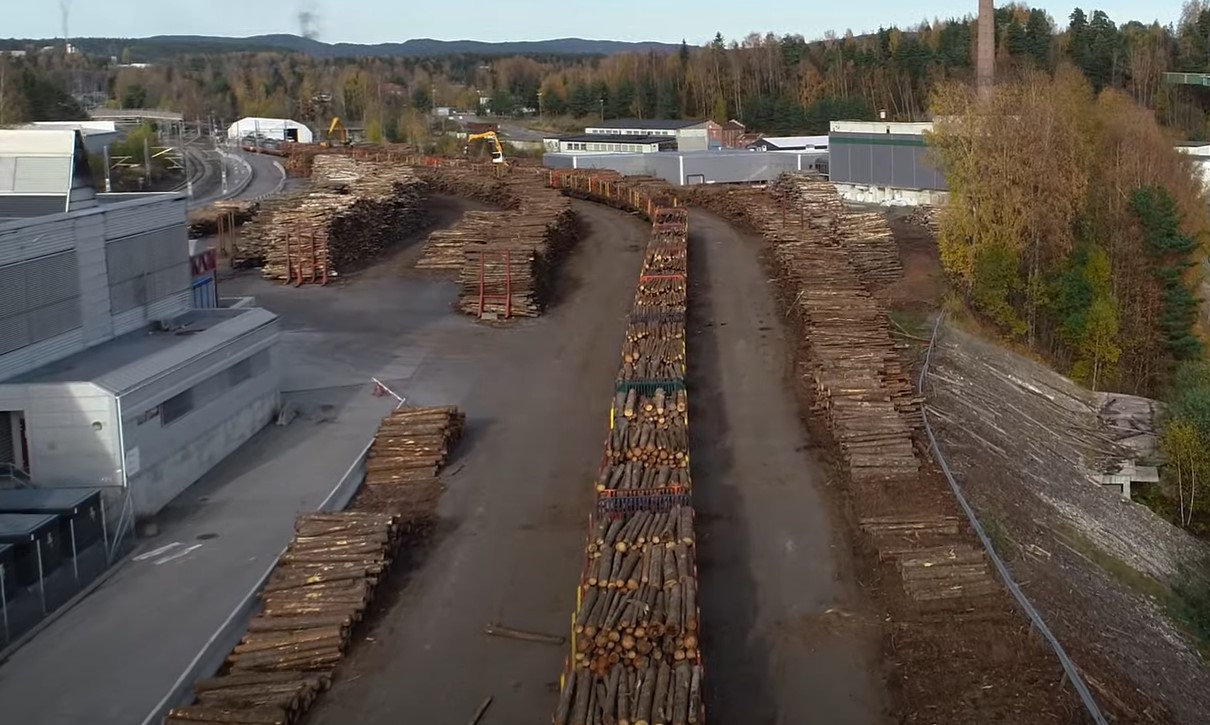
Preview
A politically stable country, but bitcoin mining is controversial
In addition to looking for cheap and green electricity, miners seek jurisdictions with favorable regulatory environments and political stability.Norway is one of the world's most politically stable countries, with acceptable regulatory conditions for most businesses, giving it ninth place in the World Bank's Ease of Doing Business Index.Still, the bitcoin mining industry is not the most popular in the country and has faced some political opposition. To understand the political risk, you must know about the power tax saga from 2019.While most power consumers in Norway pay a power tax of NOK 0.1541 ($0.017) per kWh, the energy-intensive industrial sector pays only NOK 0.0055 ($0.0006) per kWh. In 2016, the Norwegian government made data centers eligible for this reduced power tax rate to attract more of them to Norway.The government hoped for Google or Facebook but instead got bitcoin miners. Displeased by how their regulations backfired, they decided to revoke the reduced tax rate specifically for crypto miners in 2019. As a result, miners' electricity prices suddenly increased by $0.016 per kWh, a substantial amount in an industry with a median power price of $0.04.Many Norwegian data centers are combined facilities partly hosting bitcoin miners. Therefore, this tax hike affected a significant share of the data center industry. In addition, data centers that weren't directly affected started to question the previously indisputable political stability of operating in Norway, and the country’s excellent international reputation in the industry began to crack.The whole sector quickly joined forces and started fighting against the tax hike, backed by the Confederation of Norwegian Enterprises (NHO) and the Norwegian IT association IKT Norge.In 2020, the Norwegian government gave in to the pressure and decided not to revoke the reduced power tax after all. They may have realized that such a granular selectivity in their decision-making for who is eligible for a reduced power tax is most likely against several Norwegian and international laws.Still, the harm was already done. Bitmain, Hive Blockchain, and several other companies decided to leave Norway because of the increased regulatory uncertainty.Bitcoin miners are considered eligible for the reduced power tax, but we may not have seen the end of the saga yet. Some Norwegian politicians still haven't given up on increasing miners' power tax, while some even want to ban bitcoin mining.Recently we have also seen attempts on regulatory restraints from the EU, of which Norway is not a member. However, the EU still has a considerable influence on Norwegian legislation since Norway is, through various agreements, obliged to comply with a large part of the EU's regulations. In November 2021, Swedish regulators proposed a draft for an EU-wide Bitcoin ban from 2025. Norwegian local government and regional development minister Bjørn Arild Gram announced that he would attempt to copy the ban in Norway if it passed the vote in the EU Parliament. In the end, the ban attempt was unsuccessful.Luckily, Norway doesn't have a long history of populistic bans on certain activities based on subjective opinions. In addition, certain international agreements also protect industries from government overreach. Therefore, even though fractions in the national government may not like it, it's very unlikely that mining will become regulatorily infeasible in Norway.Conclusion
Thanks to its cheap and clean power, cold climate, and political stability, Norway has attracted an outsized bitcoin mining sector considering the nation's small population.From 2021, substantial power price differences emerged between the southern and northern parts of the country. These price gaps will persist, and therefore, miners should ideally locate their operations in the much cheaper north.Even though Norway is considered one of the most politically stable countries globally, the bitcoin mining industry remains controversial and faces some political opposition. Examples are the Norwegian government's unsuccessful attempt to raise power taxes specifically for miners and Swedish regulators' failed EU-wide Bitcoin ban.Still, we should keep in mind that the bitcoin mining industry is not only controversial in Norway but also in most other countries. Therefore, compared to most other alternative countries for bitcoin mining outside North America, I don't consider Norway one of the most politically hostile to the industry.Recently, North America has soaked up a large share of the mining capacity, and I assume some of these miners look at Norway as a potential location to diversify their operations geographically.Also, as miners increasingly face public pressure in using renewable energy, tapping into the Norwegian green hydropower becomes even more attractive.Because of these reasons, I expect the bitcoin mining industry in Norway to keep growing, especially in the northern part of the country.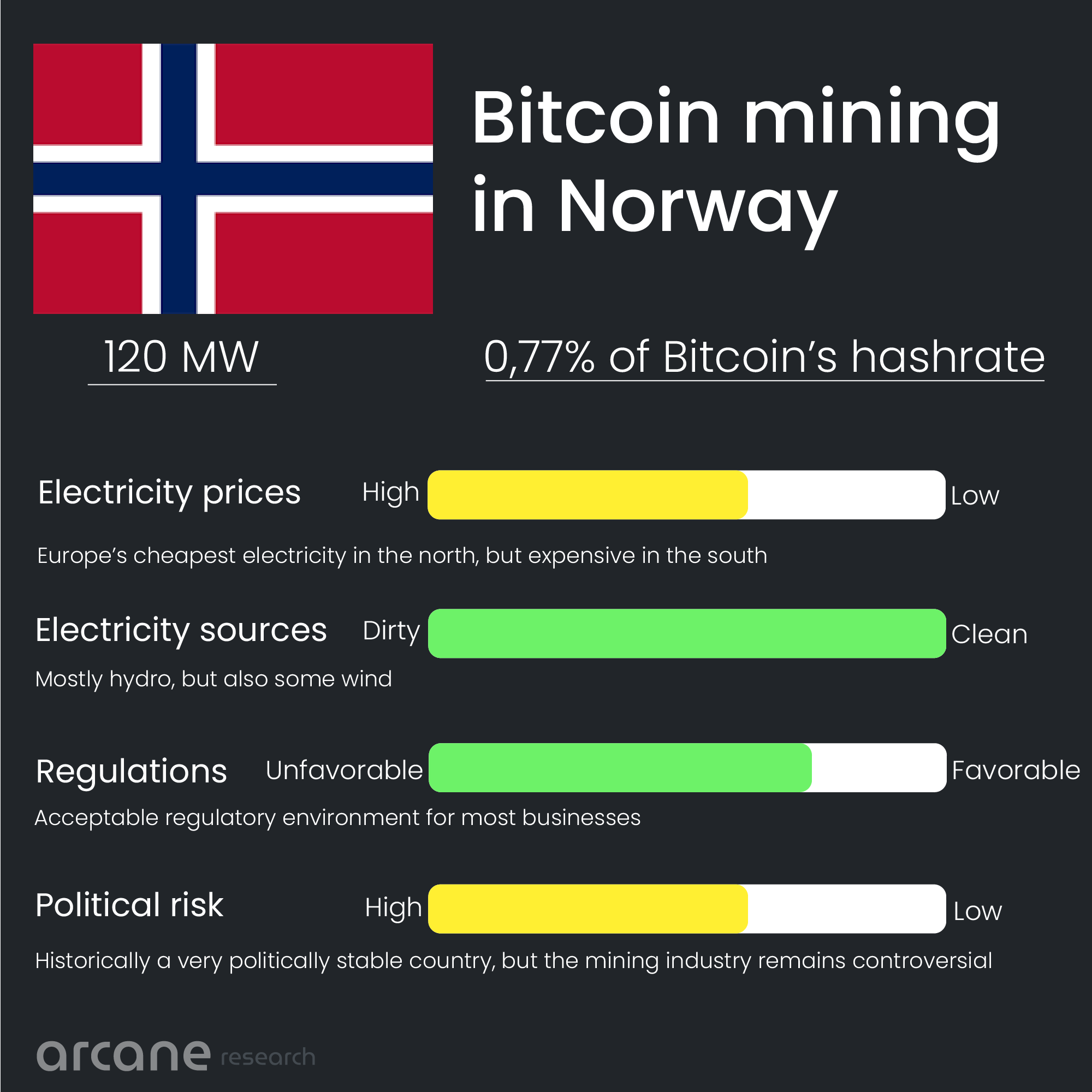
Preview
Appendix: Overview of Norwegian miners
Here are all the mining facilities I identified in Norway.Kryptovault in Hønefoss
Kryptovault in Hønefoss is the biggest facility in Norway, with 45 MW of bitcoin mining capacity. They are currently operating at around 18 MW since they are in the process of replacing their older ASICs with newer and more energy-efficient models.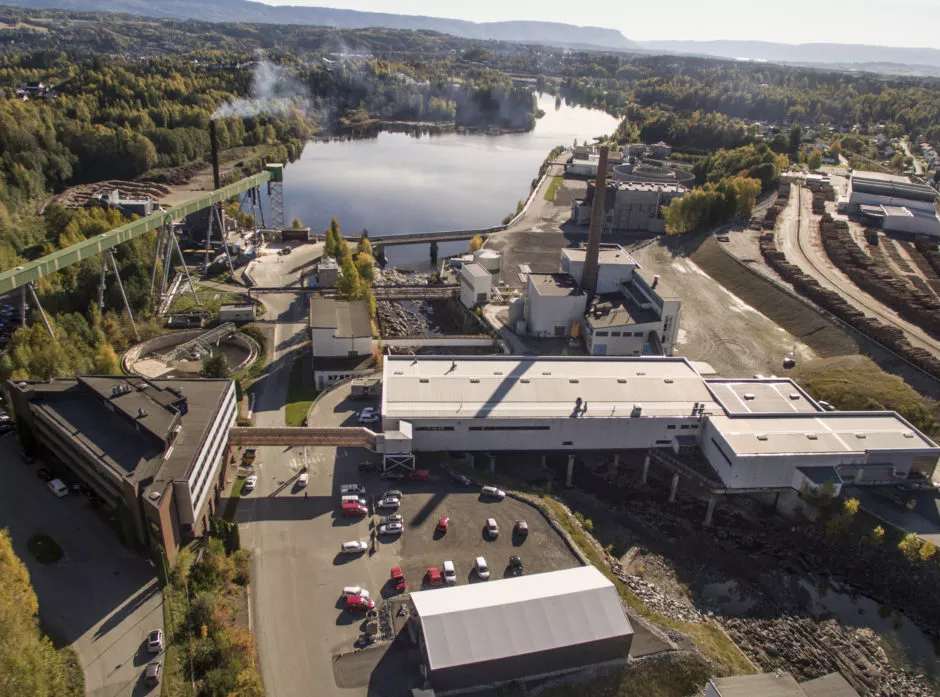
Preview
Kryptovault in Dale
In addition to their Hønefoss facility, Kryptovault operates a 25 MW facility in Dale. Currently, they utilize around 8 MW of the facility’s capacity.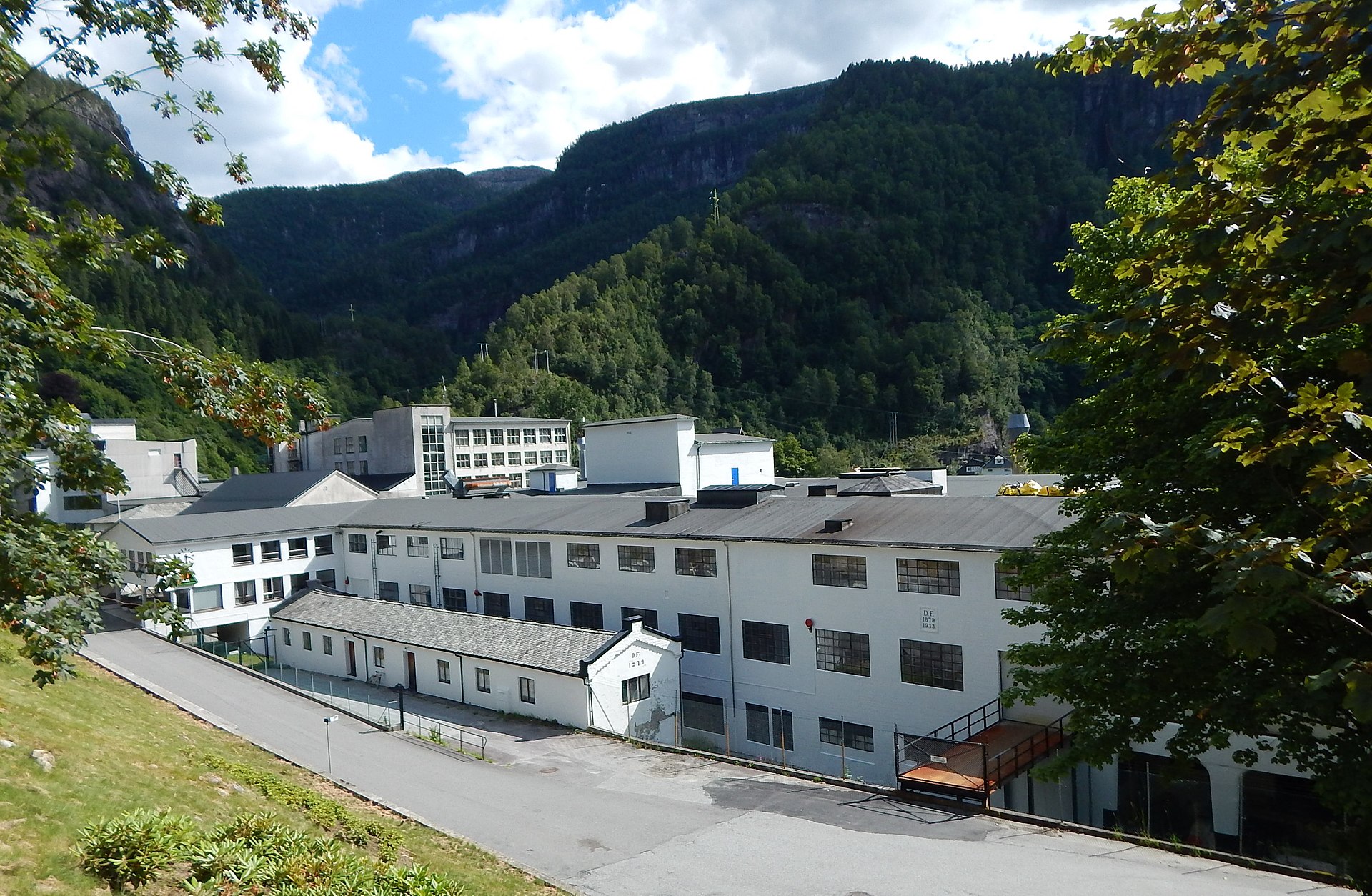
Preview
COWA and Lian Group in Mo
Cowa and Lian Group’s facility in Mo up north is the country’s second-largest with a capacity of 40 MW, of which 36 MW is currently used. Bitfury built this facility in 2018 and self-mined here until 2022.
Preview
Bitdeer in Molde
Cloud mining platform Bitdeer hosts 38 MW in the Troll Housing data center outside Molde. Troll Housing's facility utilizes a former mine, where the climate conditions are perfect for bitcoin mining year-round.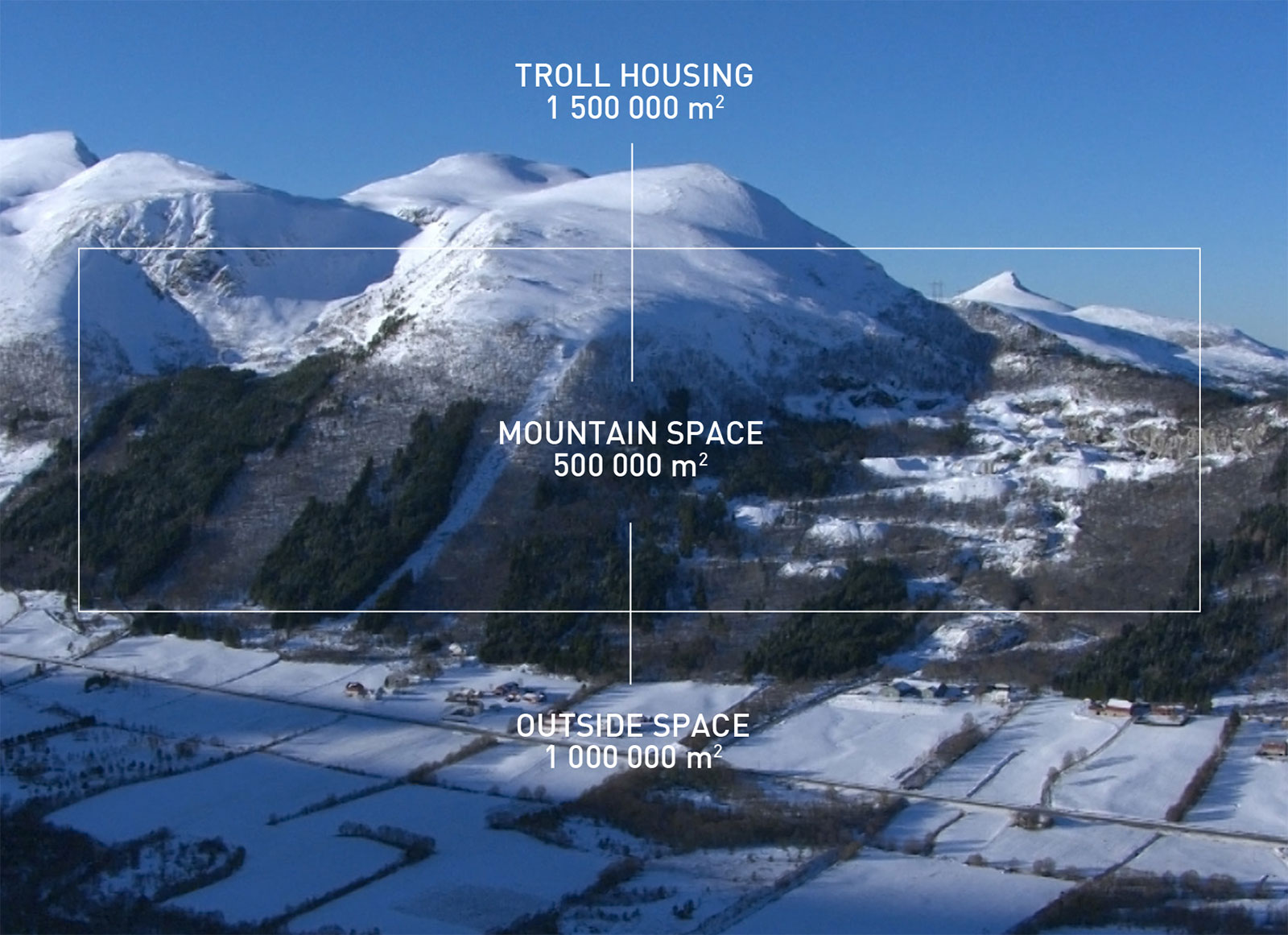
Preview
Bitdeer in Tydal
Bitdeer is expanding its Norway operations with a 50 MW data center under development in Tydal. Troll Housing, which also hosts Bitdeer's Molde operation, is constructing the Tydal data center.Bitdeer's most recent investor prospectus confirms this data center.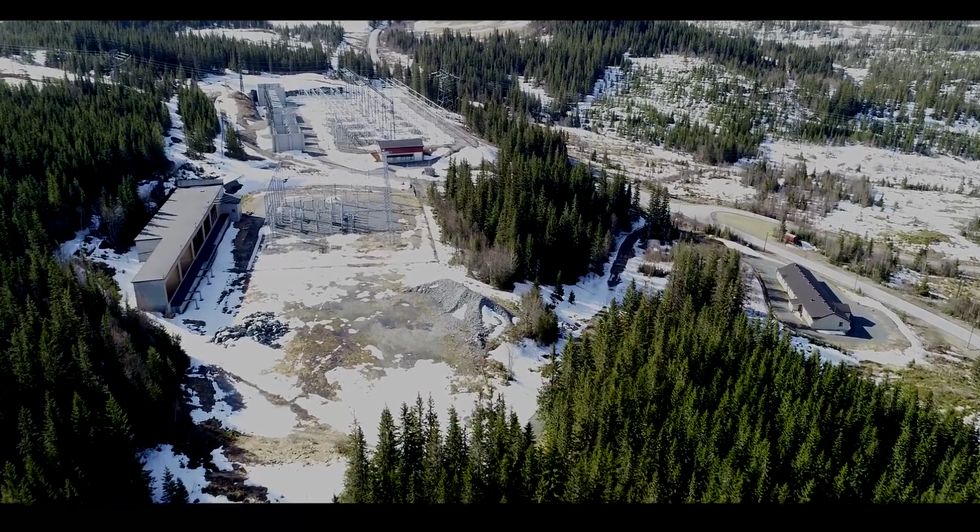
Preview
Bitzero in Tunnsjødal
Kevin O'Leary backed Bitzero is developing a facility in Tunnsjødal. With 100 MW under development, the facility can potentially become the biggest in Norway when finished in 2023. Having completed the first development step, Bitzero currently mines with 7 MW.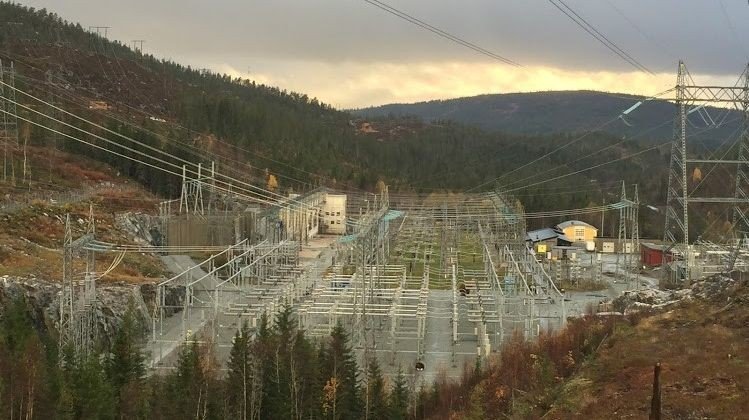
Preview
Arcane Green Data in Fyresdal
Arcane Green Data has since 2021 hosted 2.5 MW in Oslofjord Datacenter in Fyresdal, currently operating close to full capacity.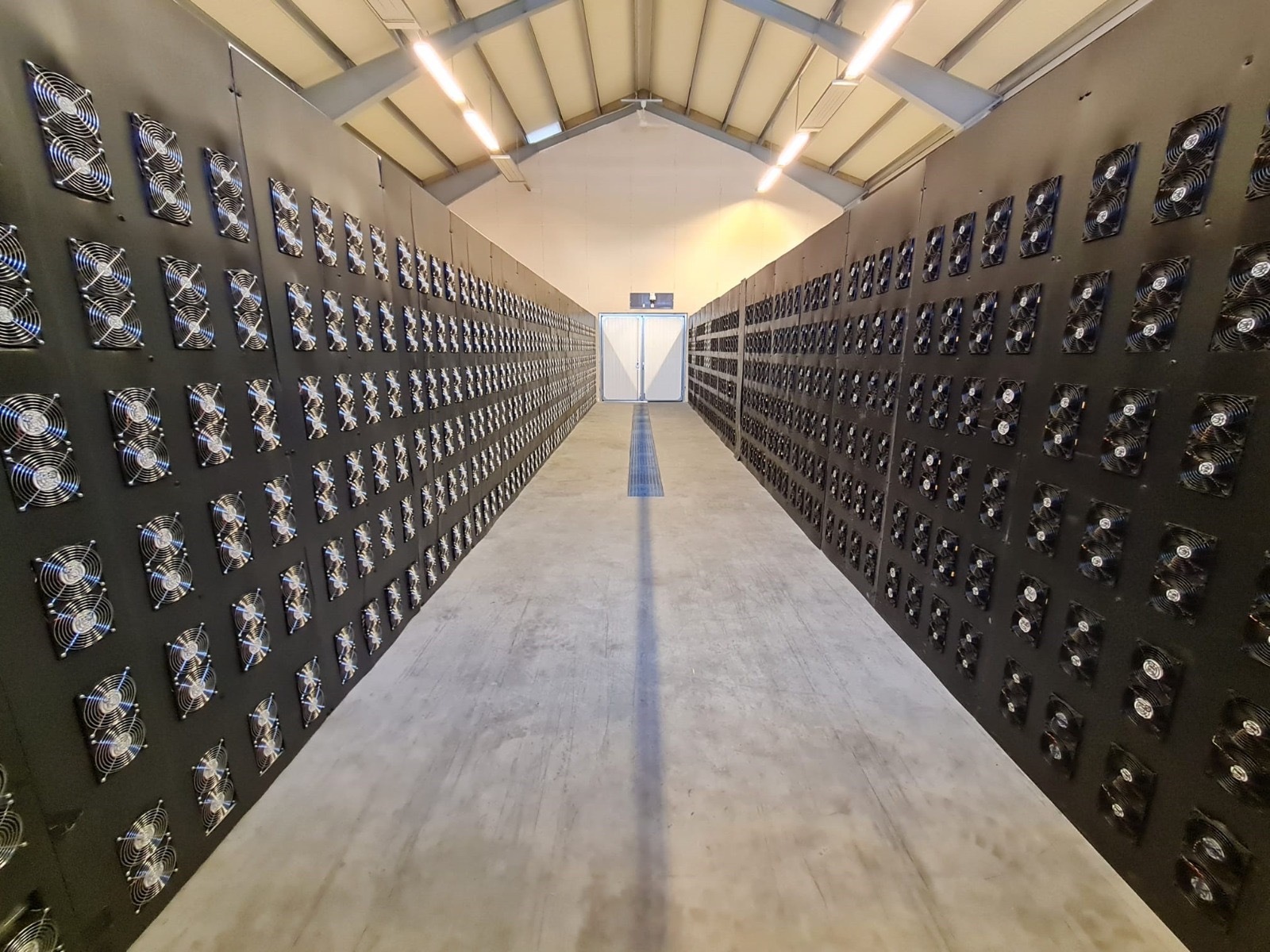
Preview
Bluebite in Bodø
The German company Bluebite has since 2019 operated a 1 MW data center in the arctic city of Bodø inside a building previously used for the production of marine equipment. The company looks at the Bodø data center as a pilot project while looking for expansion opportunities in northern Norway.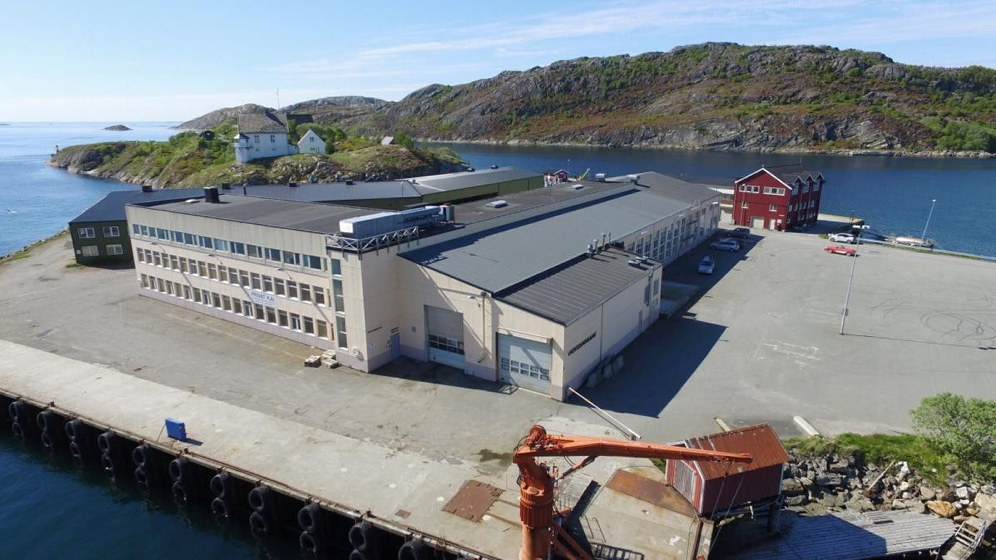
Preview
Bluebite in Sulitjelma
Bluebite is developing a data center in Sulitjelma, a former mining town one hour from Bodø. In addition to doing cloud computing, they are currently mining with 4 MW but are looking to expand.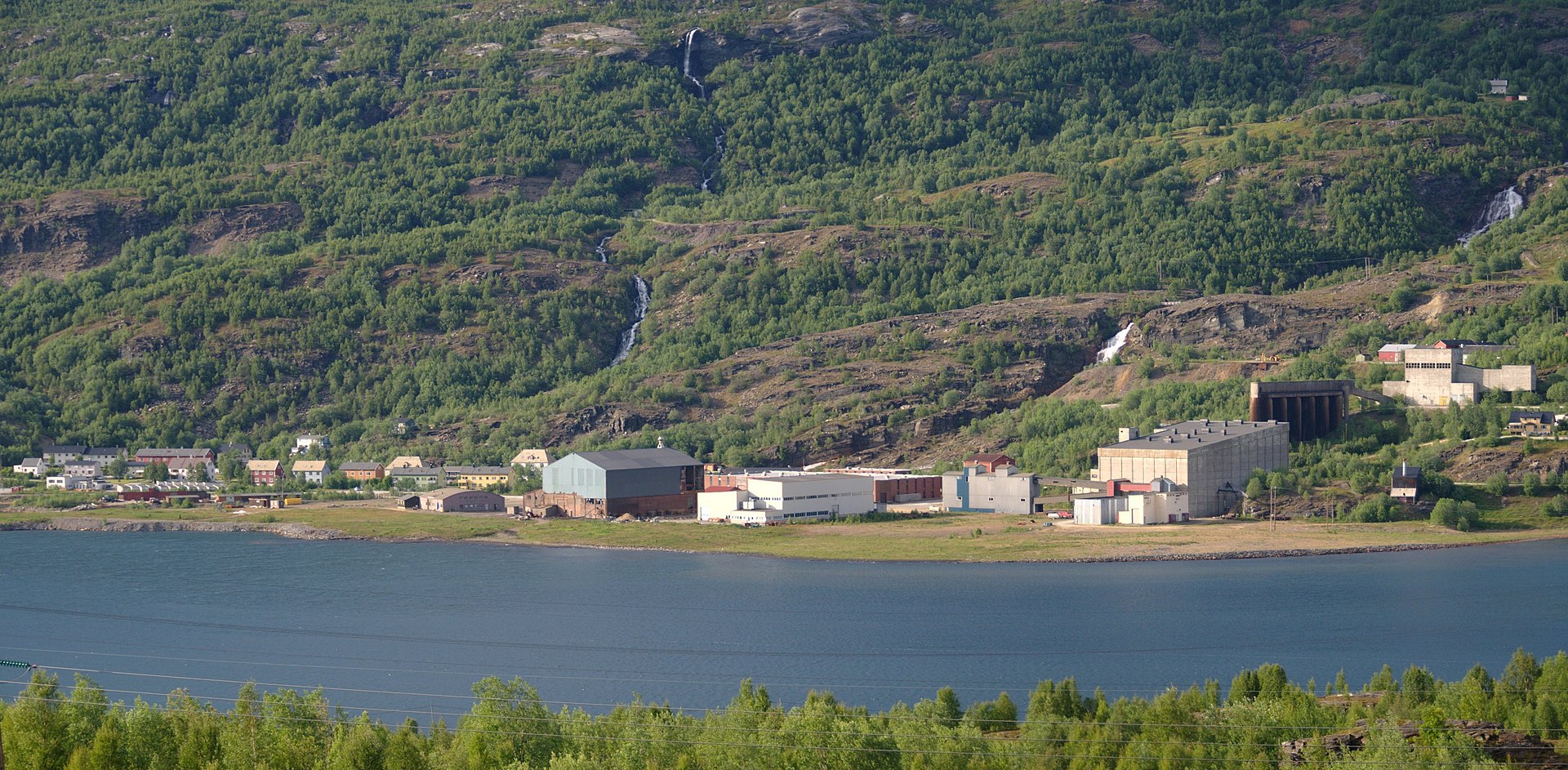
Preview
New Mining Company in Alvdal
New Mining Company is a Russian group mining bitcoin since 2018 in Alvdal. Their 3 MW operation has been highly controversial, with neighbors complaining about the noise and some even suspecting the company of using their mining activities as a cover for a Russian spy operation.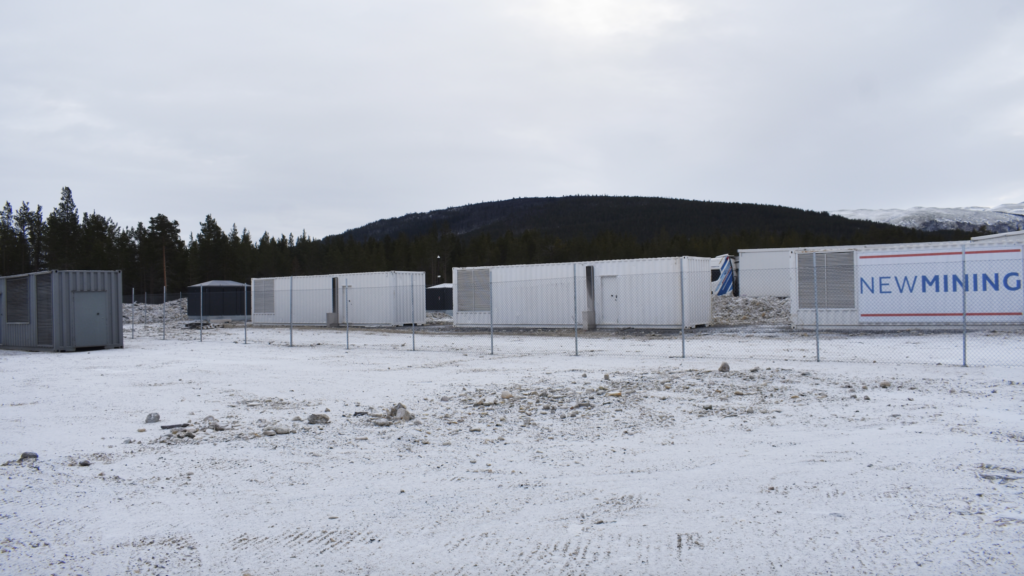
Preview
Northern Data in Måløy
Although this article focuses on bitcoin miners, I decided to include one big ether miner. German company Northern Data mines ether with a capacity of 25 MW deep inside a mountain in the Lefdal Mine data center in Måløy in the western part of Norway.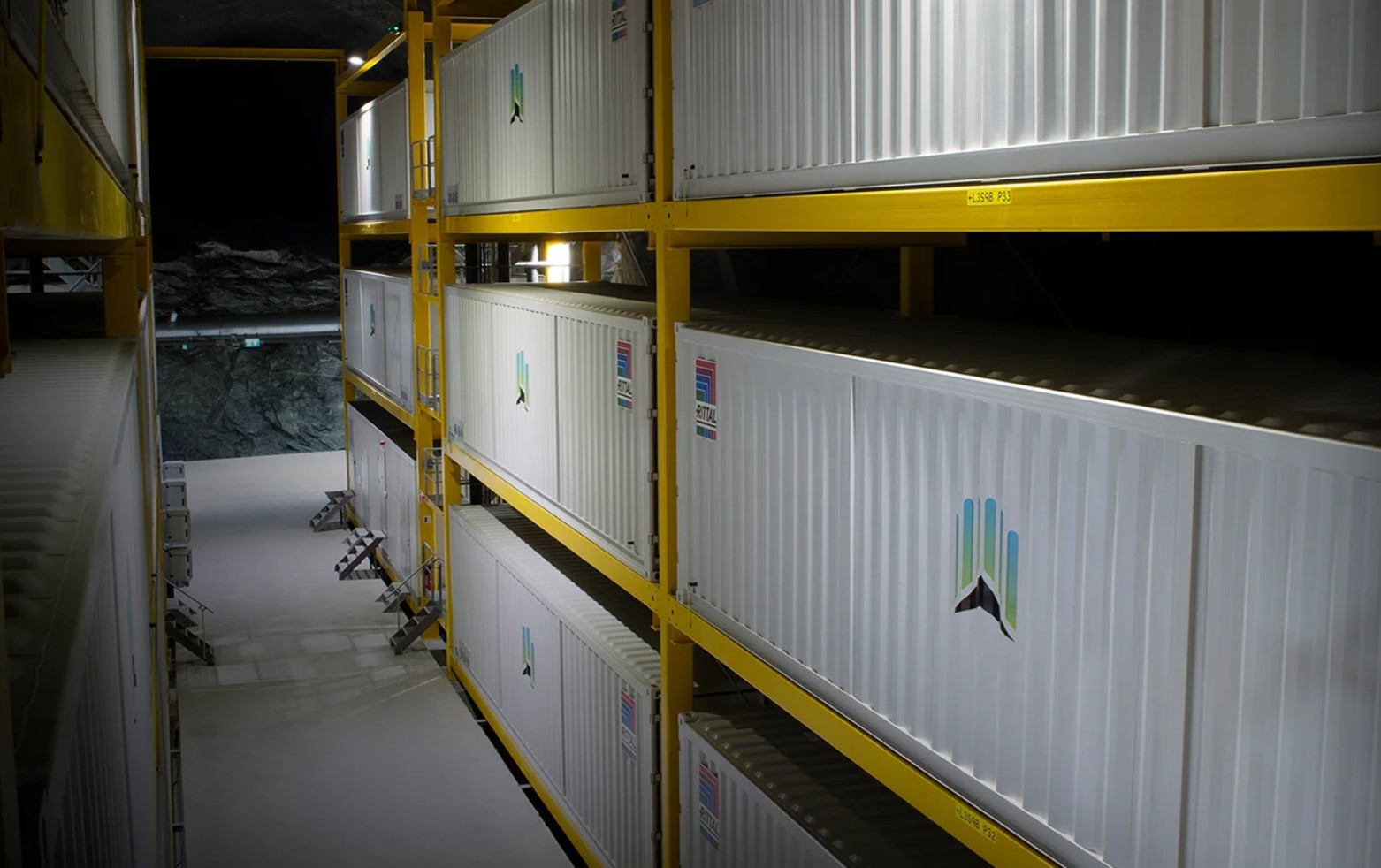
Preview
Northern Data in Notodden
After having mined crypto deep inside the mountain in Lefdal Mine since 2018, Northern Data expanded their Norway operations with a 40 MW data center in Notodden in 2021.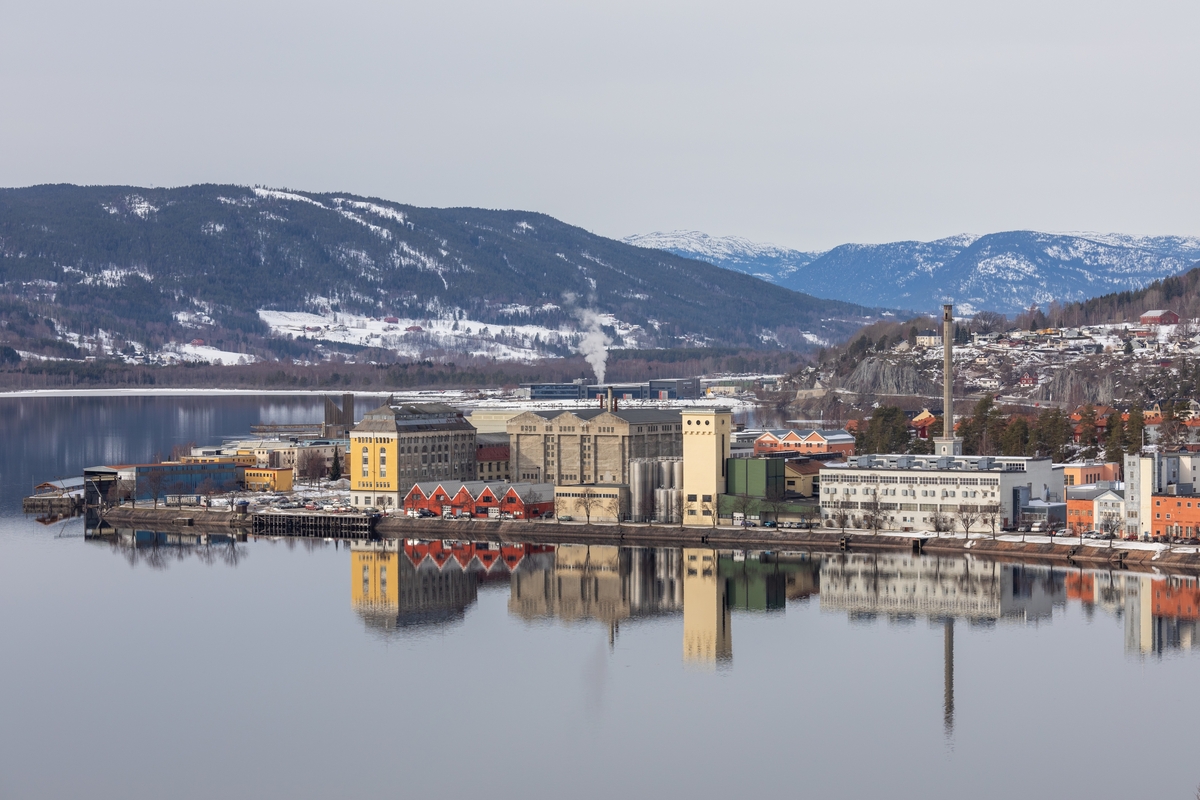
Preview
Northern Data in Vassbygdi
In 2021 Northern Data bought an old industrial building in Vassbygdi, deep inside Sognefjorden, Norway’s longest fjord.It’s unclear whether they mine bitcoin, ether, or use the data center for other high-performance computing purposes. Still, just like in their Notodden data center, a job ad reveals that they are looking for engineers to work on GPUs, so they likely mine ether here.
Preview
Hydrokraft in Glomfjord
Hydrokraft is constructing a 30 MW data center in Glomfjord in Northern Norway, planning to finish it later in 2022. The data center is located in Glomfjord Industripark, an industrial hub consisting of 19 companies. Hydrokraft has ambitions of reusing heat from the data center for other industrial applications.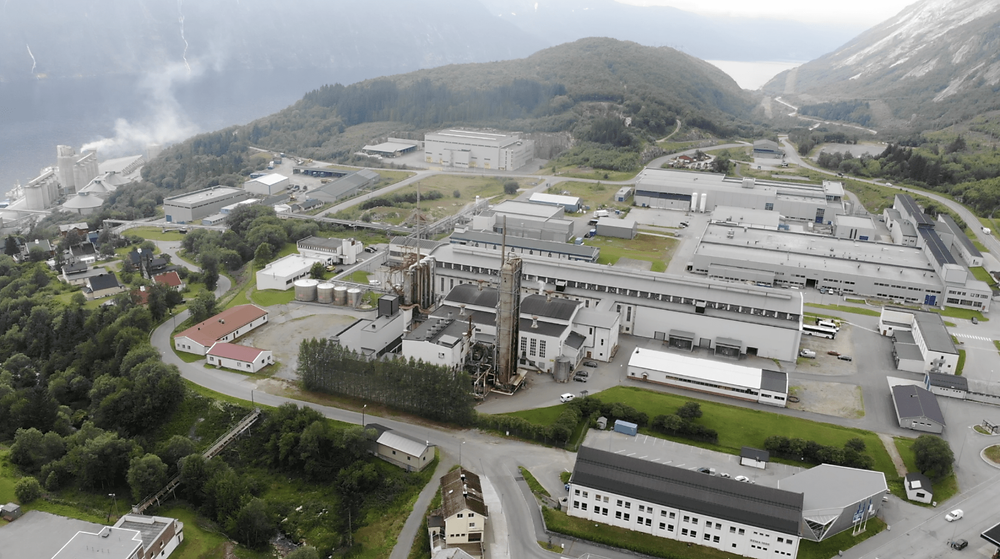
Preview
